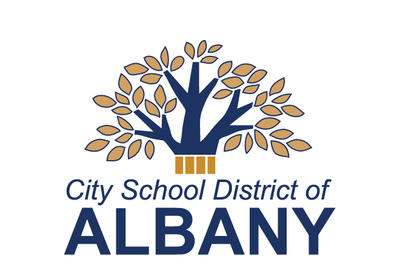
Grade 2 expectations
New York State learning standards outline what a student should know and be able to do by the end of the grade level. There are also additional skills that a well-rounded student should possess. Listed below are examples of academic expectations for second grade students. These should be viewed holistically and are not meant to determine promotion or retention; a student may demonstrate or be on track for proficiency without having mastered every skill. Teachers intervene as appropriate to support skills development.
- Distinguish long and short vowels when reading regularly spelled one-syllable words (including common vowel teams like oo, ee, ea)
- Decode short and long vowel sounds in two-syllable words
- Decode regularly spelled two-syllable words
- Recognize roots and common prefixes and suffixes (e.g., re-, un-, -ed, -ing)
- Read common high-frequency words by sight (e.g., the, said, does)
- Read with enough accuracy and fluency to support comprehension
- Identify and retell main idea/lesson, key ideas, reasons, supporting details
- Identify text features and story structure, how characters respond to events
- Read and understand grade 2 literature and informational texts
- Follow agreed-upon rules of conversation (e.g., take turns speaking)
- Participate in collaborative conversations with peers and adults
- Ask/answer questions to demonstrate understanding of texts read aloud
- Speak in complete sentences when appropriate
- Determine the meaning of new words when a known prefix is added to a known word (e.g., happy/unhappy, tell/retell).
- Use individual words to determine the meaning of compound words (e.g., birdhouse, lighthouse, housefly; bookshelf, notebook, bookmark)
- Recognize shades of meaning between related adjectives (large vs gigantic) and related verbs (sprint vs jog)
- Use parts of speech appropriately when writing and speaking
- Use punctuation appropriately based on grade 2 content
- Use learned spelling patterns (e.g., words beginning with ch-, sh-, th-)
- Write an opinion piece and provide clear reason(s) for the opinion
- Write an informative piece and provide facts about the topic
- Write a narrative and sequence events
- Grade Level Fluencies: Add and subtract within 20
- Geometry:
- Reason with shapes and their attributes
- Operations and Algebraic Thinking:
- Use addition and subtraction to solve one- and two-step word problems
- Know odd and even numbers
- Work with equal groups of objects to gain foundations for multiplication
- Number and Operations in Base Ten:
- Count, read, write and compare numbers within 1,000
- Use understanding of place value and properties of operations to solve problems using addition and subtraction within 100
- Measurement and Data:
- Measure and estimate lengths in standard units
- Use addition and subtraction to solve word problems involving length
- Tell time from a digital and analog clock to the nearest five minutes
- Represent and interpret data
- Solve problems involving money
- Understand and apply scientific concepts related to Physical, Earth, and/or Life Science
- Use scientific equipment to take scientific measurements such as units
- Recognize that objects have properties that can be observed, described and/or measured (e.g., length, width, volume, size, etc.)
- Make measurements using nonstandard units and standard metric units
- Use inquiry to demonstrate understanding of the scientific process and concepts
- Describe characteristics of urban, suburban and rural communities
- Begin to understand democratic principles and participation in government
- Examine the availability of resources and the interdependence of communities
- Recognize and identify patterns of continuity and change in the community
- Use globes and maps to examine location
- Describe the goods and services that are produced in a local community, and those that are produced in other communities
- Make independent decisions guided by the elements/principles of art
- Develop technical skills and select materials/tools/media to serve creative intent
- Create, observe, explore and discuss artistic concepts connecting to a theme and/or various world cultures
- Maintain tone, pitch, rhythm, tempo and dynamics while singing
- Use instruments to create and perform music
- Perform, create, demonstrate, interpret and discuss musical concepts such as melody, rhythm, harmony, form and style from various world cultures for a specific purpose
- Perform basic motor and manipulative skills and movement patterns
- Show competence in a variety of physical activities
- Demonstrate safe and responsible personal and social behavior
Keep your child engaged at home
The following are simple every day activities you can do at home and in the world to help support what your child is learning during the school day.
- Read to your student every day; choose books with rich vocabulary that are about two levels more difficult than your student could read without help. Ask questions about the text.
- Listen to your student read aloud; choose books with simple, easy to sound out words while they are first learning.
- Help your student practice high frequency words using word lists from school.
- Look for patterns and practice sorting words into categories (e.g., shape, color, size, type).
- Practice sorting assigned spelling words into patterns (e.g., words that end in –at, words that start with sh-).
- Expect your child to write each day; ask him or her to use the strategies being learned in school.
- Practice adding and subtracting within 10 by using flash cards.
- Pose addition and subtraction problems to your child verbally, expecting a quick response.
- Ask your student to name and tell the value of coins.




